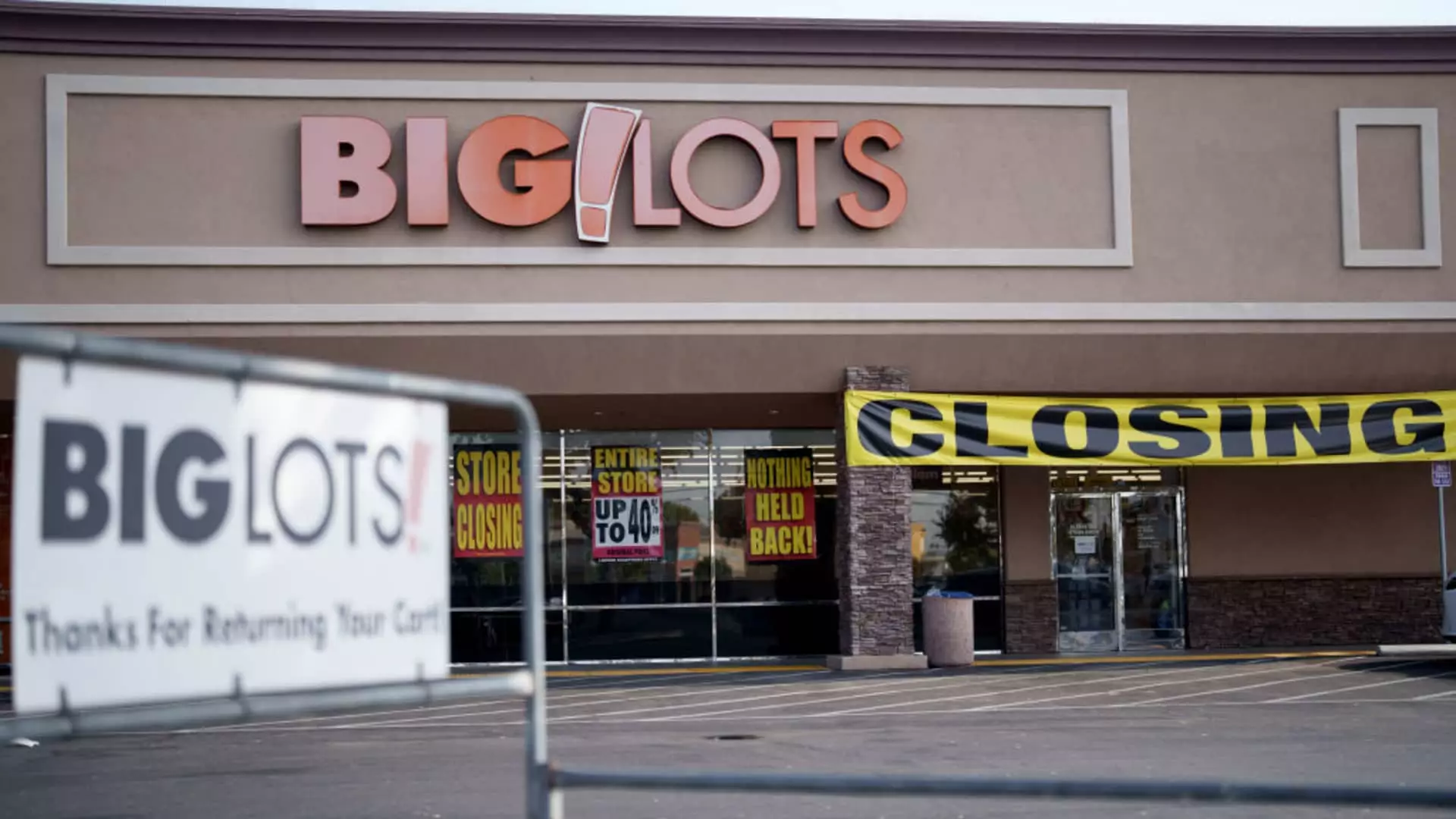Discount home goods retailer Big Lots has recently found itself entangled in the complexities of bankruptcy, a stark representation of the challenges affecting many businesses today. As they filed for bankruptcy earlier this week, it became clear that a combination of high interest rates and a sluggish housing market had conspired to stifle demand for their low-priced furniture and decor. The case of Big Lots underscores not just the volatility of retail but also the broader economic factors that can derail even the most well-established brands.
As outlined in court records, Big Lots has agreed to a deal with Nexus Capital Management for approximately $760 million. This figure includes $2.5 million in cash along with the company’s outstanding debts. With over 1,300 stores operating across 48 states, Big Lots has been one of the country’s largest closeout chains, catering primarily to budget-conscious consumers. Despite generating around $4.7 billion in revenue for fiscal 2023, sales decreased sharply as the pandemic-driven demand for home furnishings diminished. In an attempt to realign its financial standing, the company has opted to shutter nearly 300 stores, demonstrating the immediate need for corrective measures.
Despite these tumultuous changes, CEO Bruce Thorn reassured stakeholders that the business would maintain normal operations during this transitional period. He articulated a vision for future growth under new ownership, focusing on strengthening the company’s operational methods and financial health. Thorn emphasized a commitment to providing substantial bargains and an optimized shopping experience, hinting at a desire not merely to survive but to thrive. This determination is a commendable attitude that has become increasingly rare in companies facing similar tough choices.
The downturn witnessed by Big Lots isn’t purely an internal issue; it is significantly influenced by external economic variables. The retail sector thrives on consumer spending, and the unwelcome rise in inflation and interest rates has led many households—particularly those in the lower and middle-income brackets—to tighten their budgets. This demographic forms the core customer base for Big Lots, and the noticeable decrease in discretionary spending on home and seasonal goods has placed a stranglehold on the retailer’s revenue streams. It’s a testament to how economic conditions play an instrumental role in shaping a business’s fate, leaving even the best intentions high and dry in challenging times.
Big Lots also faces intense competition in the realm of discount retail. Well-established players like Walmart, Wayfair, and TJX Companies’ Home Goods dominate the field, each offering a diverse array of home goods that often resonate more with consumers. Market analysts, such as Neil Saunders of GlobalData, point out that Big Lots struggles to distinguish itself in this crowded space, often offering products that consumers can find at lower prices elsewhere. This lack of decisive differentiation further complicates the company’s ability to attract discerning customers who seek both value and quality.
Moreover, the shopping experience at Big Lots has been criticized for being cluttered and overwhelming. Shoppers are often met with an assortment of items lacking cohesive categorization, making it challenging to discover valuable “treasures” amid the chaos. According to industry assessments, a simpler, more streamlined approach to product assortment could significantly enhance the customer experience. If consumers are to be enticed back into stores, organizations like Big Lots must prioritally consider how their layouts affect shopping satisfaction—a crucial element in today’s competitive landscape.
As Big Lots moves forward in the bankruptcy process, a court-supervised auction will determine the future ownership of its business. Potential for a fresh start hangs in the balance, with Nexus’s current bid standing as the favored offer unless a more competitive bid emerges. Strategic partners such as Davis Polk & Wardwell and Guggenheim Securities are slated to assist the company through this intricate process, reflecting the seriousness of the situation at hand.
The saga of Big Lots serves as a sobering reminder of the complexities of retail, where macroeconomic conditions intertwine with consumer behavior in unpredictable ways. In a world where budget-conscious consumers are increasingly selective and competition is relentless, the ability to maneuver through these challenges is vital. As Big Lots re-evaluates its strategy, the retail industry as a whole should take heed—true value comes not just from low prices, but from delivering memorable experiences and a clear competitive edge in a crowded marketplace.

